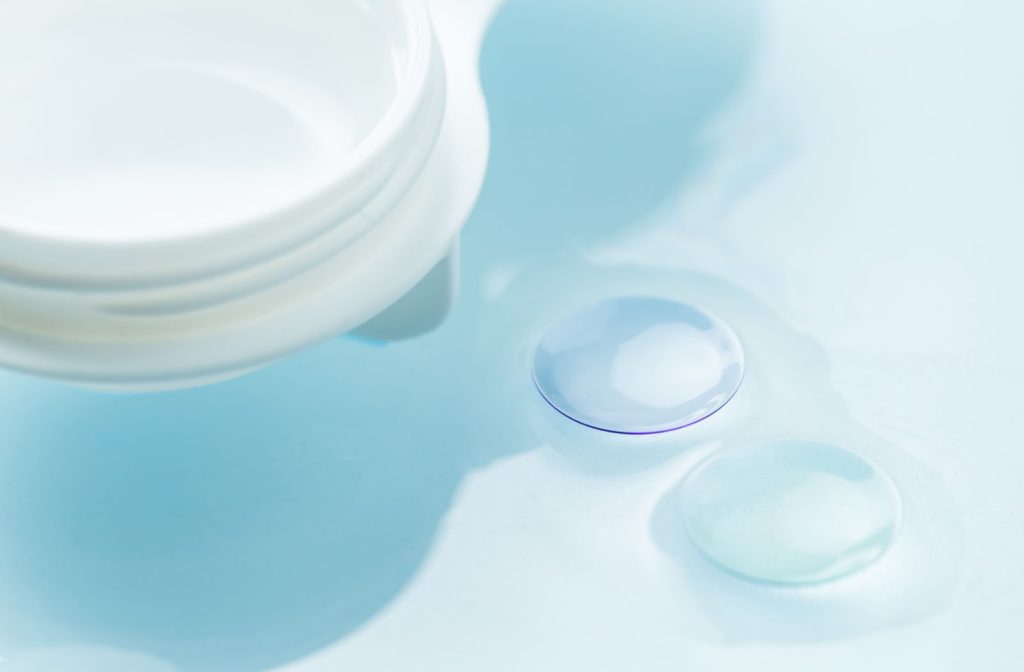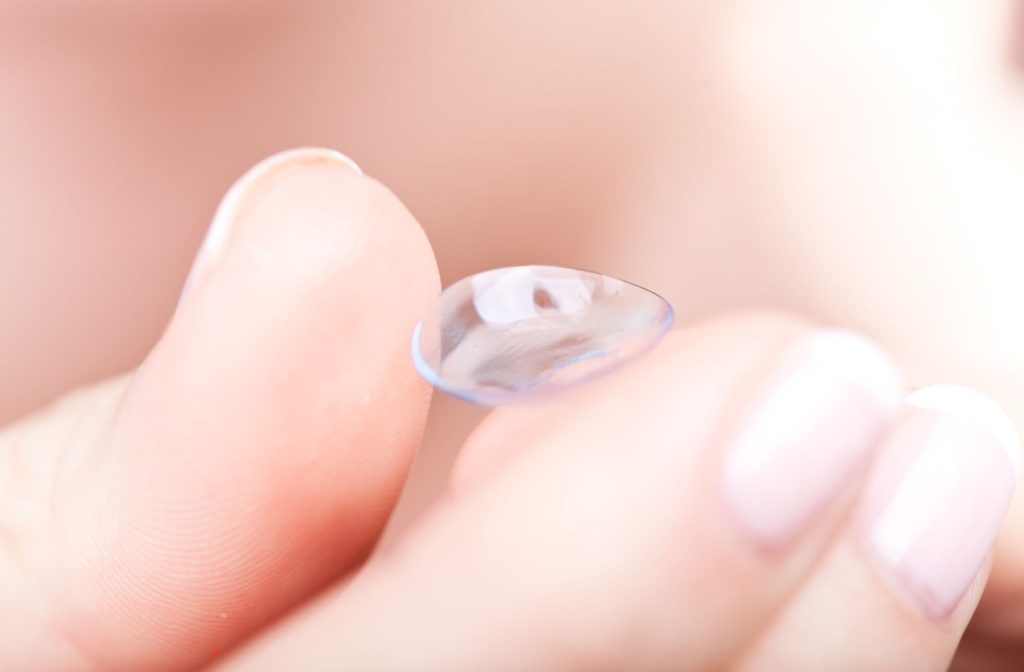When your eyes are dry, irritated, or watery, the sensation pulls focus. Wearing your contact lenses might feel rough as you fight the urge to close or rub your eyes. Dry eye is a common problem for contact lens wearers, and the condition can limit your choices—from the types of lenses to how long you can comfortably keep them in.
Fortunately, you have options. Dry eye treatment and specialty contact lenses, like scleral lenses, can open your eyes to more comfortable contact lens wear.
Do Contacts Cause Dry Eye?
Eyes need a constant layer of moisture—known as the tear film—to help keep our eyes comfortable. However, the tear film is more than water, containing oil, mucus, and nutrients. Therefore, producing high-quality tears is essential for maintaining a clean, clear eye surface.
Contact lenses rest directly on the eye, sometimes interfering with the tear film. Although contact lenses can contribute to eye dryness or increase the risk of dry eye disease, it’s only one factor. Allergies, tear gland dysfunction, hormonal changes, and environmental conditions are a handful of the most common causes.
Many patients can continue to wear contact lenses comfortably with dry eyes. However, you may see the most benefits with a new lens type, personalized lens fit, specialty lens, or dry eye management.
Treating dry eye can improve long-term eye health and comfort—and make it easier to wear your favorite lens style or brand.
Soft Contact Lenses
Soft contact lenses are the most popular type of contact lens. The lenses are typically easier to adapt to because of the flexible material. The lens also conforms to the eye’s shape, helping to secure the lens and making it the preferred option for sports.
However, soft contact lenses absorb moisture. Some lenses have a higher water content, increasing how much water they need to remain flexible and soft. High water content lenses are more likely to dry out faster. When your eyes already have limited moisture, a lens can soak up your tear layer, contributing to dryness.
Solutions for Soft Contacts
Silicone hydrogel lenses are a type of soft lens with improved features. Crucially, the lens absorbs less water and allows 5 times more oxygen flow. The cornea (front centre of the eye) normally receives oxygen from air or tears, as there’s no direct blood supply to deliver oxygen.
Standard contact lenses can limit oxygen access, leading to hypoxia (oxygen deprivation). Low oxygen levels can increase the risk of dryness, redness, irritation, and other eye problems, including sight-threatening eye diseases.
Changing your wear schedule is another option for patients who prefer soft contacts. Disposable lenses can be replaced daily, biweekly, or monthly and are recommended for people with allergies or dry eyes. More frequent replacement can prevent protein deposits from accumulating on the lens.

RGP Contact Lenses
Rigid gas permeable (RGP) contact lenses are sometimes referred to as hard lenses given the rigid, firmer nature of the lenses. RGP lenses retain their shape when you blink, offering sharper vision. The material is also highly oxygen permeable, so the eye’s surface receives the breath of fresh air it needs to stay healthy.
The firmer material also benefits people with irregular corneas (front centre of the eye). Conversely, soft contact lenses conform to the uneven surface, limiting vision correction.
RGP contact lenses can be the better standard option for dry eye as the lenses won’t absorb your tears. The material is also resistant to lens protein deposits, decreasing the risk of surface irritation and dryness.
Scleral Lenses
Scleral contact lenses, like RGP lenses, are rigid in shape. But scleral lenses are unique because they rest on the sclera (white of the eye), vaulting over the cornea.
The lenses also have a larger surface area. Standard contact lenses are typically 9 mm, slightly bigger than the average cornea size of 12 mm, and large enough to fully cover a dilated pupil (about 9 mm in diameter.) Scleral lenses, on the other hand, range from 14.5–24 mm.
Scleral lenses can benefit patients with irregular or sensitive corneas. The cornea is densely populated with nerves, crucial for stimulating blinking and tears to protect our eyes. But the sensitivity can make it more challenging to adapt to contact lenses.
An irregular cornea or keratoconus can also make soft contact lenses a problematic fit, as the lenses conform to the irregular shape. A smooth cornea surface helps properly direct light as it enters the eye, contributing to clearer vision.
The larger surface area creates a reservoir of fluid and improves oxygen flow. Therefore, the eye’s surface receives the moisture and oxygen it needs to stay healthy.
Expand Your Options with Dry Eye Treatment
Suffering from dry eye can limit your contact lens options. But your eyes deserve better! We want you to experience healthier, clearer vision with contacts fit for your lifestyle.
Downtown Eye Care & The Contact Lens Department is expanding our dry eye treatment options, so we can offer more personalized solutions. We’re passionate about helping our patients maintain their eye health. Book an appointment today to see how dry eye treatment can benefit your vision!





